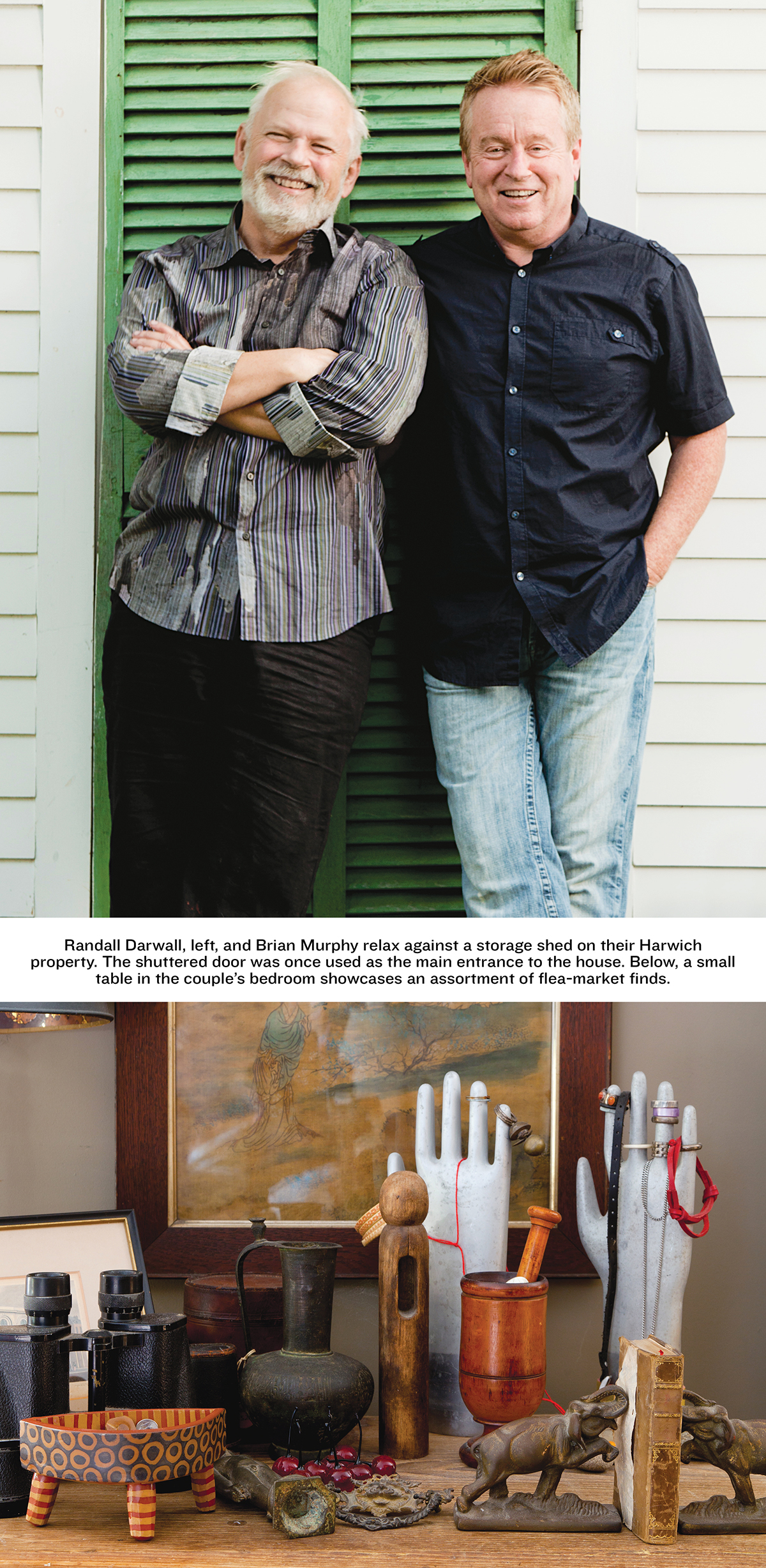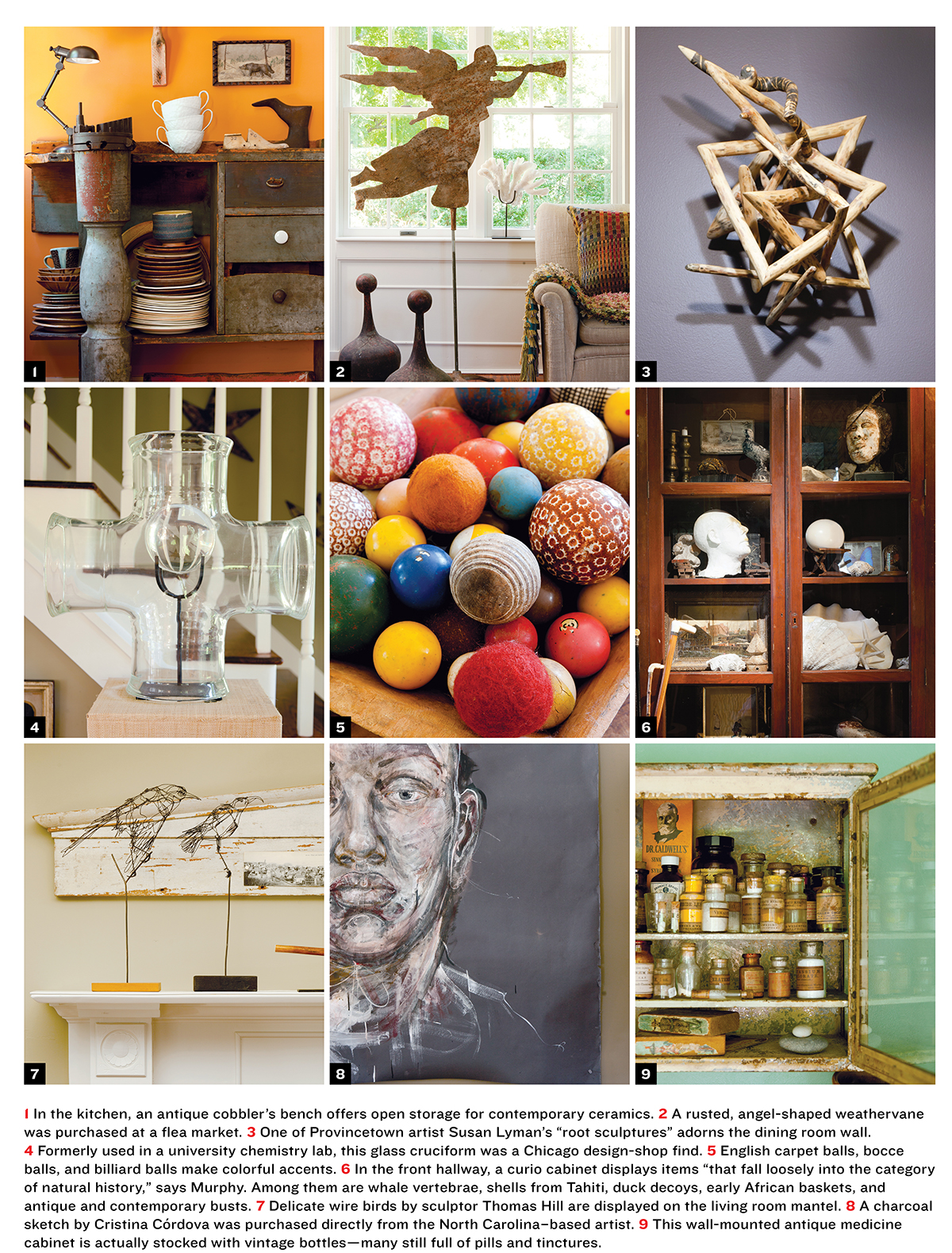Woven History

 AS ONE OF AMERICA’S PREMIER weavers of wearable art, Randall Darwall is a color virtuoso. Whereas most fabric artists might work with five shades, Darwall uses a minimum of 50 hues in his wildly textured silk weavings, which have been nationally exhibited at juried shows such as the Smithsonian Craft Show and Craft Boston. “Color,” says Brian Murphy, Darwall’s partner in life and in business, “is our thing.”
AS ONE OF AMERICA’S PREMIER weavers of wearable art, Randall Darwall is a color virtuoso. Whereas most fabric artists might work with five shades, Darwall uses a minimum of 50 hues in his wildly textured silk weavings, which have been nationally exhibited at juried shows such as the Smithsonian Craft Show and Craft Boston. “Color,” says Brian Murphy, Darwall’s partner in life and in business, “is our thing.”
The duo brought their “thing” to Harwich when they moved into this pristine 1842 Cape Victorian farmhouse 12 years ago. (They’re only the home’s third owners.) The house had good bones, but Darwall and Murphy couldn’t wait to transform the interior to match their exuberance for color, art, and antiques while preserving the house’s original moldings, slanted wide pine floors, and beautiful working fireplaces.
Bold palettes throughout – think burnt orange in the kitchen and eggplant in the dining room – make a tour of the home an “Ooh, what’s next?” kind of journey. “We’re collectors and have a ton of stuff,” says Murphy, a former social worker who now designs clothing, pillows, and quilts using Darwall’s textiles. “We painted each room a different color and just filled it to the brim.”

When not on the craft-show circuit, the pair travels the world accumulating fabrics. Their vast collection includes patterns from ancient African tribes, virtually every kind of animal print, and 19th-century quilts. Darwall re-dyes the cloth at home, removing some colors and adding others. He and Murphy also use the trips to stock up on home furnishings. “Whether we are in London, Holland, Italy, or Chicago, as soon as we arrive we find out where the flea market is,” says Darwall. “And once we get there, Brian’s the boss. I just patiently tag along while he peruses the selection.”
The couple’s other obsession is contemporary handmade ceramics. “We have pottery displayed all over the house; shelves are literally overflowing with it,” says Murphy.
“We love the pottery not only because it’s beautiful and decorative, but also because it’s functional,” adds Darwall. “There’s a unique beauty to that.”
They consider their home a quasi-gallery of contemporary art, where friends can come and learn about their latest discoveries. “We are always finding new artists to get excited about,” says Murphy, pointing out delicate wire birds created by British sculptor Thomas Hill and baskets made of Californian long-needled Torrey pine by Neil and Fran Prince. The fine-art collection is showcased against a varied backdrop of vintage collectibles, found objects, and modern pieces. The juxtaposition of styles is most apparent in the living room, which is furnished with Frank Gehry chairs, a Noguchi coffee table, and a vintage Louis Vuitton trunk. “The décor is always changing. I’m a huge fan of pairing fine antiques with things I found at the dump,” says Murphy.